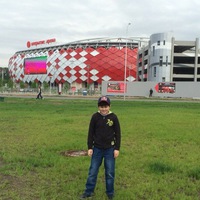
Группа школьников выехала на экспедицию из города А в город В на автобусе, а вернулась в город А по
железной дороге, затратив на обратный путь на 30 минут больше, чем на путь в город В. Найдите скорость поезда, если она на 20 километров в час меньше скорости автобуса, длинна шоссе между городами А и В состовляет 160 километров, а длинна железной дороги-150 километров. 0
0
 0
0
Ответы на вопрос
 Внимание! Ответы на вопросы дают живые люди. Они могут содержать ошибочную информацию, заблуждения, а также ответы могут быть сгенерированы нейросетями. Будьте внимательны. Если вы уверены, что ответ неверный, нажмите кнопку "Пожаловаться" под ответом.
Внимание! Ответы на вопросы дают живые люди. Они могут содержать ошибочную информацию, заблуждения, а также ответы могут быть сгенерированы нейросетями. Будьте внимательны. Если вы уверены, что ответ неверный, нажмите кнопку "Пожаловаться" под ответом.

где х - скорость поезда
тогда х=60
 0
0
 0
0

Problem Analysis
A group of school students traveled from city A to city B by bus and returned from city B to city A by train. The return journey took 30 minutes longer than the journey to city B. We need to find the speed of the train if it is 20 kilometers per hour slower than the speed of the bus. The distance between city A and city B is 160 kilometers by road and 150 kilometers by train.Solution
Let's assume the speed of the bus is x kilometers per hour. Therefore, the speed of the train is x - 20 kilometers per hour.To find the time taken for the journey from city A to city B by bus, we can use the formula:
Time = Distance / Speed
The time taken for the journey from city A to city B by bus is:
Time(bus) = Distance(road) / Speed(bus) = 160 / x
The time taken for the return journey from city B to city A by train is:
Time(train) = Distance(train) / Speed(train) = 150 / (x - 20)
According to the problem, the return journey took 30 minutes longer than the journey to city B. We can convert 30 minutes to hours by dividing by 60:
30 minutes = 30 / 60 = 0.5 hours
Therefore, we can set up the equation:
Time(train) = Time(bus) + 0.5
Substituting the values we have:
150 / (x - 20) = 160 / x + 0.5
To solve this equation, we can cross-multiply and simplify:
150x = 160(x - 20) + 0.5x(x - 20)
Simplifying further:
150x = 160x - 3200 + 0.5x^2 - 10x
Rearranging the equation:
0.5x^2 - 10x - 3200 = 0
We can solve this quadratic equation using the quadratic formula:
x = (-b ± √(b^2 - 4ac)) / (2a)
For this equation, a = 0.5, b = -10, and c = -3200.
Solving the equation will give us two possible values for x, but we will only consider the positive value since speed cannot be negative.
Let's calculate the value of x using the quadratic formula.
Calculation
Using the quadratic formula:x = (-(-10) ± √((-10)^2 - 4 * 0.5 * -3200)) / (2 * 0.5)
Simplifying:
x = (10 ± √(100 + 6400)) / 1
x = (10 ± √6500) / 1
Calculating the square root of 6500:
√6500 ≈ 80.622577
Substituting the value of √6500:
x = (10 ± 80.622577) / 1
Calculating the positive value of x:
x = (10 + 80.622577) / 1 ≈ 90.622577
Therefore, the speed of the bus is approximately 90.622577 kilometers per hour.
Since the speed of the train is 20 kilometers per hour slower than the speed of the bus, the speed of the train is:
Speed(train) = Speed(bus) - 20 ≈ 90.622577 - 20 ≈ 70.622577
Therefore, the speed of the train is approximately 70.622577 kilometers per hour.
Answer
The speed of the train is approximately 70.622577 kilometers per hour. 0
0
 0
0
Топ вопросов за вчера в категории Алгебра
Последние заданные вопросы в категории Алгебра
-
Математика
-
Литература
-
Алгебра
-
Русский язык
-
Геометрия
-
Английский язык
-
Химия
-
Физика
-
Биология
-
Другие предметы
-
История
-
Обществознание
-
Окружающий мир
-
География
-
Українська мова
-
Информатика
-
Українська література
-
Қазақ тiлi
-
Экономика
-
Музыка
-
Право
-
Беларуская мова
-
Французский язык
-
Немецкий язык
-
МХК
-
ОБЖ
-
Психология
-
Физкультура и спорт
-
Астрономия
-
Кыргыз тили
-
Оʻzbek tili




















